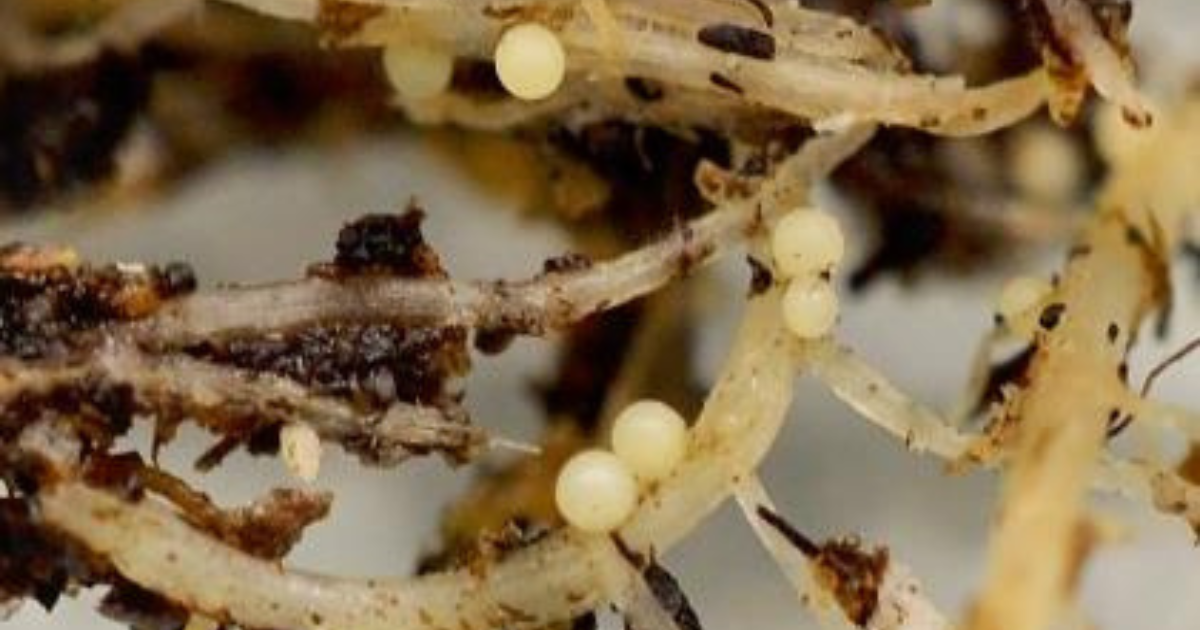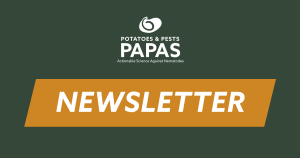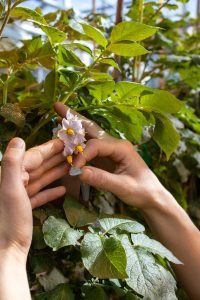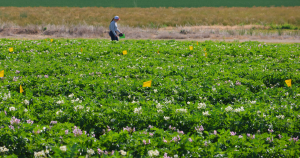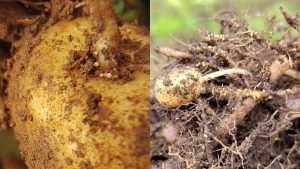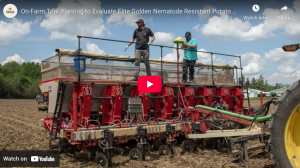Erosion of Potato Resistance to Pale Cyst Nematode
Globodera pallida:
- A regulated pest, pale cyst nematode was found in Idaho in 2006
- Three pathotypes of pale cyst nematode are known to occur in Europe: Pa1, Pa2, and Pa3.
- The pathotype of the Idaho population is Pa2/3.
ZERO TOLERANCE IN THE US
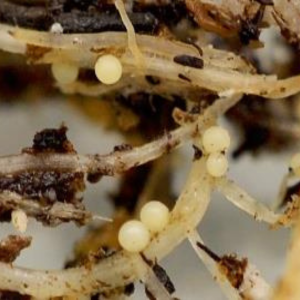
Resistance breeding challenges
- PCN is highly heterogeneous. Thus, multiple resistance sources need to be incorporated into breeding germplasm.
- Continuous use of resistant varieties imposes a strong selection pressure which increases the frequency of resistance-breaking populations.
Eradication effort in U.S.
- Soil fumigation: 1,3-dichloropropene
- Resistance: No resistance to PCN is found in russet type potatoes, but breeders are developing resistance for US growers
Resistant breaking populations
- PCN reproduction on resistant potato varieties due to multiple croppings with resistant varieties containing the same resistance source has been observed in Europe
- This caused genetic selection for stronger and/or more virulent PCN populations
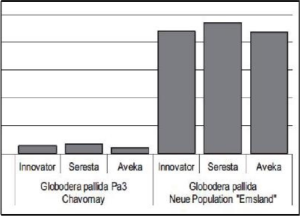

Biology of progeny cysts from resistant potatoes
There is a significant change in the behavior of PCN from these resistant clones, including:
- Less hatch
- Larger cysts
- Longer larvae
References:
- Beniers, J. E., Nöllen, Y., van Eck, H. J., & Schouten, H. J. (2019). Increased virulence of Globodera pallida during repeated rearing on different resistant potato cultivars explained by a simple model. Plant Pathology, 68(3), 445-453.
- Dandurand, L. M., Zasada, I. A., Wang, X., Mimee, B., De Jong, W., Novy, R., … & Kuhl, J. C. (2019). Current status of potato cyst nematodes in North America. Annual review of phytopathology, 57, 117-133.
- Fournet, S., Kerlan, M. C., Renault, L., Dantec, J. P., Rouaux, C., & Montarry, J. (2013). Selection of nematodes by resistant plants has implications for local adaptation and cross‐virulence. Plant pathology, 62(1), 184-193.
- Fournet, S., Eoche‐Bosy, D., Renault, L., Hamelin, F. M., & Montarry, J. (2016). Adaptation to resistant hosts increases fitness on susceptible hosts in the plant parasitic nematode Globodera pallida. Ecology and evolution, 6(8), 2559-2568.
- Jones, J. (2017). The Fascinating Biology of Potato Cyst Nematodes. Globodera Alliance Newsletter.
- Kort, J., Ross, H., Rumpenhorst, H. J., & Stone, A. R. (1977). An international scheme for identifying and classifying pathotypes of potato cyst-nematodes Globodera rostochiensis and G. pallida. Nematologica, 23(3), 333-339.
- Mwangi, J. M., Niere, B., Finckh, M. R., Krüssel, S., & Kiewnick, S. (2019). Reproduction and life history traits of a resistance breaking Globodera pallida population. Society of Nematologists (via Exeley Incorporated).
- Turner, S. J., Stone, A. R., & Perry, J. N. (1983). Selection of potato cyst-nematodes on resistant Solanum vernei hybrids. Euphytica, 32(3), 911-917.
- Turner, S. J. (1990). The identification and fitness of virulent potato cyst-nematode populations (Globodera pallida) selected on resistant Solanum vernei hybrids for up to eleven generations. Annals of applied Biology, 117(2), 385-397.

